VITAMIN D Alert: We're Losing Our Sunshine!
By now most of us know about the importance of Vitamin D in our diets and that it's nicknamed the "sunshine vitamin" (because we can get our daily dose of vitamin D by 15 minutes of sun exposure). But we also know that with the approach of winter, most folks experience a vitamin D shortage since the days are shorter, we're losing our sunshine, and they're just not outside that much when it's cold.
This said, here's other important things you ought to know about this vital vitamin:
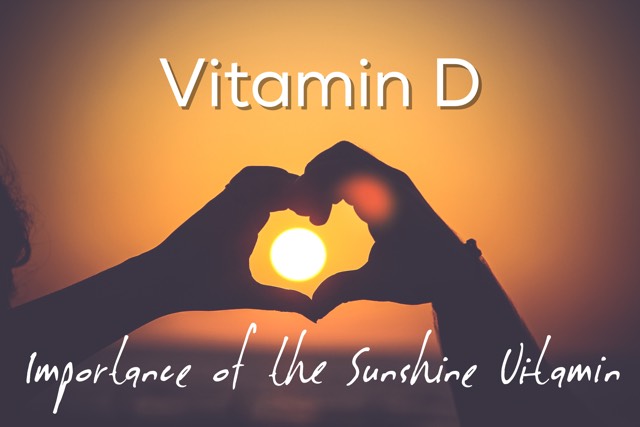

Also, those who live at extreme north and south latitudes or in any area where sunlight disappears for six months at a time are also at risk for vitamin D deficiency. Frequently people who live in these climates use alternate light sources that radiate ultraviolet rays. Very dark-skinned people such as African Americans are also at risk for vitamin D deficiency as their skin pigment blocks ultraviolet light rays.
And those who limit their exposure to the sun through the use of high-SPF sunblocks or who do not venture outdoors for exercise or sport and those who cannot or will not drink milk are also at a high risk for vitamin D deficiencies.
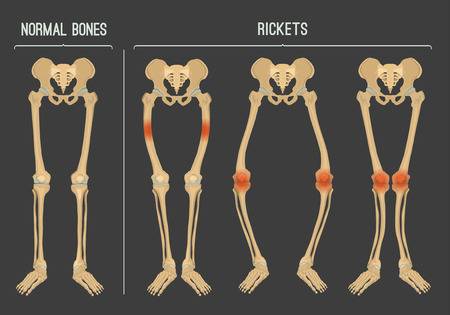
Severe deficiency of vitamin D can lead to rickets (bone deformities) in children and a similar disease, osteomalacia, in adults. Less severe deficiency symptoms include loss of appetite, diarrhea, insomnia, visual problems and weight loss. Vitamin D lowers the risk of colon polyps, prostate cancer, coronary artery disease and Type 1 Diabetes.
It's common for folks to turn to vitamin supplements in an effort to get enough vitamin D. But there's a concern here: Just because we ingest vitamins, there's no guarantee that they'll be absorbed and serve any good purpose. In other words, there's a little science we need to know about taking vitamins--Vitamin D in particular. Here's what I found out about how to best absorb Vitamin D supplements:
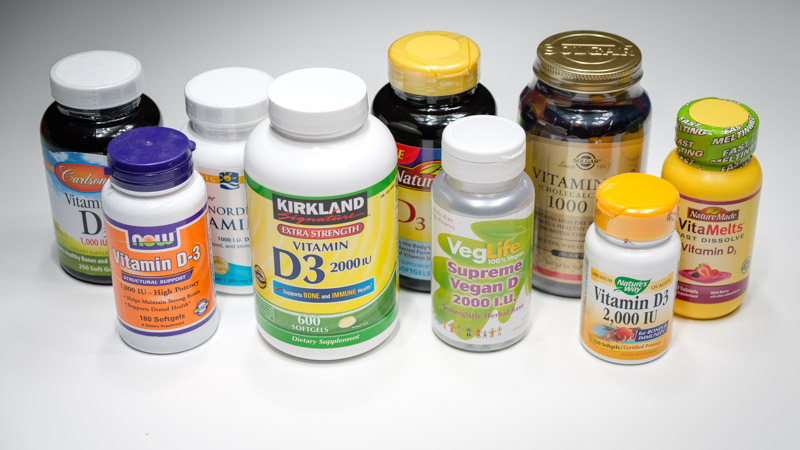
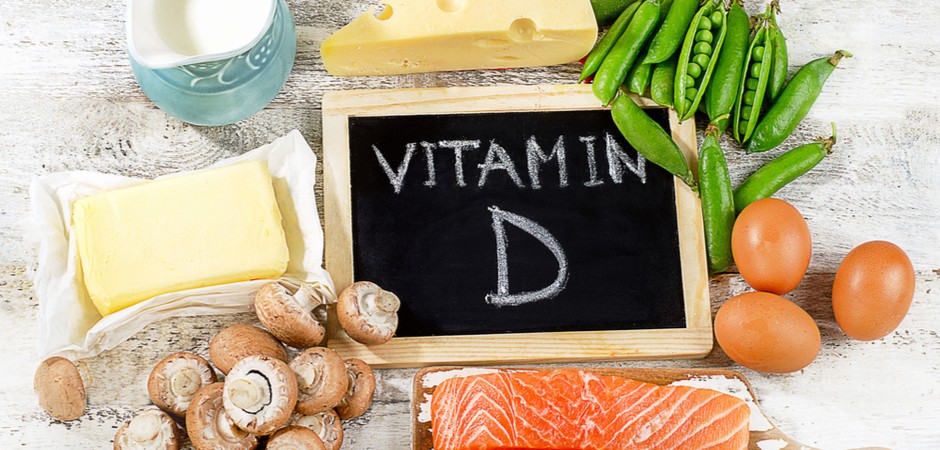
Natural sources of Vitamin D include fish liver oils, fatty saltwater fish, dairy products and eggs. Butter, cod liver oil, dandelion greens and kale, shiitake and chanterelle mushrooms, oatmeal, almonds, salmon, sweet potatoes, peas, and tuna are all good sources of Vitamin D. Herb sources include alfalfa, horsetail, nettle and parsley.
Now as thanks for reading through all that scientific stuff, here's a recipe that involves salmon, eggs, mushrooms, milk, butter, and cheese--all off the above recommended list!
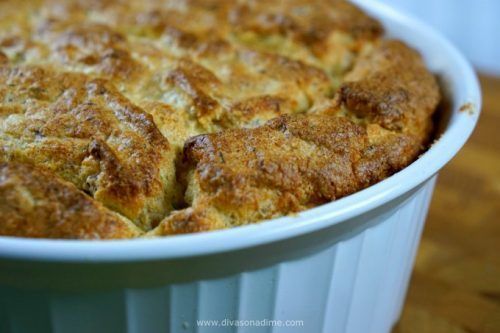

1 onion chopped fine (about 1 cup)
1 cup shittake, chopped mushrooms or chanterelle mushrooms
6 tablespoons unsalted butter
1/2 pound smoked salmon chopped (about 1 1/2 cups)
6 tablespoons flour
2 cups milk
8 large eggs separated
3 tablespoons finely chopped fresh dill
1/2 to 3/4 cup grated Parmesan cheese
Directions:
Add Recipe to Cook'n
This said, here's other important things you ought to know about this vital vitamin:

- Low vitamin D levels may be caused by a lack of sun exposure, lack of dietary vitamin D, mal-absorption of nutrients, side effects from medications or supplements, chronic diseases such as kidney or liver disease, and other causes.
- In addition, seniors, infants and toddlers, dark-skinned people, and pregnant or breastfeeding women may be particularly at risk for low vitamin D levels.
- Vitamin D is important for blood clotting and optimal function of the thyroid gland.
- It's a fat-soluble vitamin and is necessary for the proper absorption of calcium and the development of bones and teeth.
- Vitamin D should not be taken without calcium; in the absence of calcium, vitamin D pulls calcium from the bones and teeth in order to synthesize with it, resulting in possible bone breakage.
- The form of vitamin D we get from our food sources is not readily available for the body's use until it is converted by the liver and kidneys. People with liver, kidney, gallbladder, and intestinal disorders may have a difficult time of converting vitamin D to the usable form and are at risk for vitamin D deficiency.

Also, those who live at extreme north and south latitudes or in any area where sunlight disappears for six months at a time are also at risk for vitamin D deficiency. Frequently people who live in these climates use alternate light sources that radiate ultraviolet rays. Very dark-skinned people such as African Americans are also at risk for vitamin D deficiency as their skin pigment blocks ultraviolet light rays.
And those who limit their exposure to the sun through the use of high-SPF sunblocks or who do not venture outdoors for exercise or sport and those who cannot or will not drink milk are also at a high risk for vitamin D deficiencies.

Severe deficiency of vitamin D can lead to rickets (bone deformities) in children and a similar disease, osteomalacia, in adults. Less severe deficiency symptoms include loss of appetite, diarrhea, insomnia, visual problems and weight loss. Vitamin D lowers the risk of colon polyps, prostate cancer, coronary artery disease and Type 1 Diabetes.
It's common for folks to turn to vitamin supplements in an effort to get enough vitamin D. But there's a concern here: Just because we ingest vitamins, there's no guarantee that they'll be absorbed and serve any good purpose. In other words, there's a little science we need to know about taking vitamins--Vitamin D in particular. Here's what I found out about how to best absorb Vitamin D supplements:

- As mentioned above, it must be taken calcium.
- Avoid taking mineral oil or products containing mineral oil. Mineral oil can interfere with vitamin D absorption.
- Avoid overuse of antacids. They will interfere with absorption. If you have perpetual digestive problems, consult with your doctor.
- Check your medications. Some can interfere with absorption of vitamin D, such as cortisone and other steroids.
- Be careful if you are taking diuretic drugs. They can upset the calcium/vitamin D ratio in your body.
- Assess your need for vitamin D if you have liver problems, gallbladder disease or gastrointestinal disorders. All of these can interfere with vitamin D absorption.

Natural sources of Vitamin D include fish liver oils, fatty saltwater fish, dairy products and eggs. Butter, cod liver oil, dandelion greens and kale, shiitake and chanterelle mushrooms, oatmeal, almonds, salmon, sweet potatoes, peas, and tuna are all good sources of Vitamin D. Herb sources include alfalfa, horsetail, nettle and parsley.
Now as thanks for reading through all that scientific stuff, here's a recipe that involves salmon, eggs, mushrooms, milk, butter, and cheese--all off the above recommended list!

Salmon and Mushroom Souffle
Serving size: 6
Calories per serving: 456
Ingredients:
Calories per serving: 456
1 onion chopped fine (about 1 cup)
1 cup shittake, chopped mushrooms or chanterelle mushrooms
6 tablespoons unsalted butter
1/2 pound smoked salmon chopped (about 1 1/2 cups)
6 tablespoons flour
2 cups milk
8 large eggs separated
3 tablespoons finely chopped fresh dill
1/2 to 3/4 cup grated Parmesan cheese
Directions:
Preheat oven to 375°F. Butter and flour a 2-quart souffle dish, knocking out excess flour. In large saucepan cook onions and mushrooms in butter over moderate heat, stirring, until softened. Add salmon and cook, stirring, 5 minutes. Stir in flour and cook over moderately low heat, stirring, about 2 minutes.
In small saucepan heat milk to a bare simmer and add gradually to salmon mixture, stirring constantly. Boil salmon mixture, stirring constantly, until thickened, about 2 minutes. Remove pan from heat and whisk in egg yolks, dill, and Parmesan. Transfer salmon mixture to a large bowl.
In another large bowl with an electric mixer beat egg whites with a pinch salt until they just hold stiff peaks. Stir one fourth whites into salmon mixture to lighten and fold in remaining whites gently but thoroughly. Pour mixture into prepared dish and put in middle of oven.
Reduce oven temperature to 350°F and bake souffle 50 minutes, or until puffed and golden and a tester comes out clean. Serve immediately.
In small saucepan heat milk to a bare simmer and add gradually to salmon mixture, stirring constantly. Boil salmon mixture, stirring constantly, until thickened, about 2 minutes. Remove pan from heat and whisk in egg yolks, dill, and Parmesan. Transfer salmon mixture to a large bowl.
In another large bowl with an electric mixer beat egg whites with a pinch salt until they just hold stiff peaks. Stir one fourth whites into salmon mixture to lighten and fold in remaining whites gently but thoroughly. Pour mixture into prepared dish and put in middle of oven.
Reduce oven temperature to 350°F and bake souffle 50 minutes, or until puffed and golden and a tester comes out clean. Serve immediately.
Recipe formatted with the Cook'n Recipe Software from DVO Enterprises.
Sources:
- www.jenniferbrownwellness.com
- www.almanac.com
- www.123rf.com
- www.reviews.com
- www.medium.com
- www.divasonadime.com
 Alice Osborne
Alice Osborne
Weekly Newsletter Contributor since 2006
Email the author! alice@dvo.com
